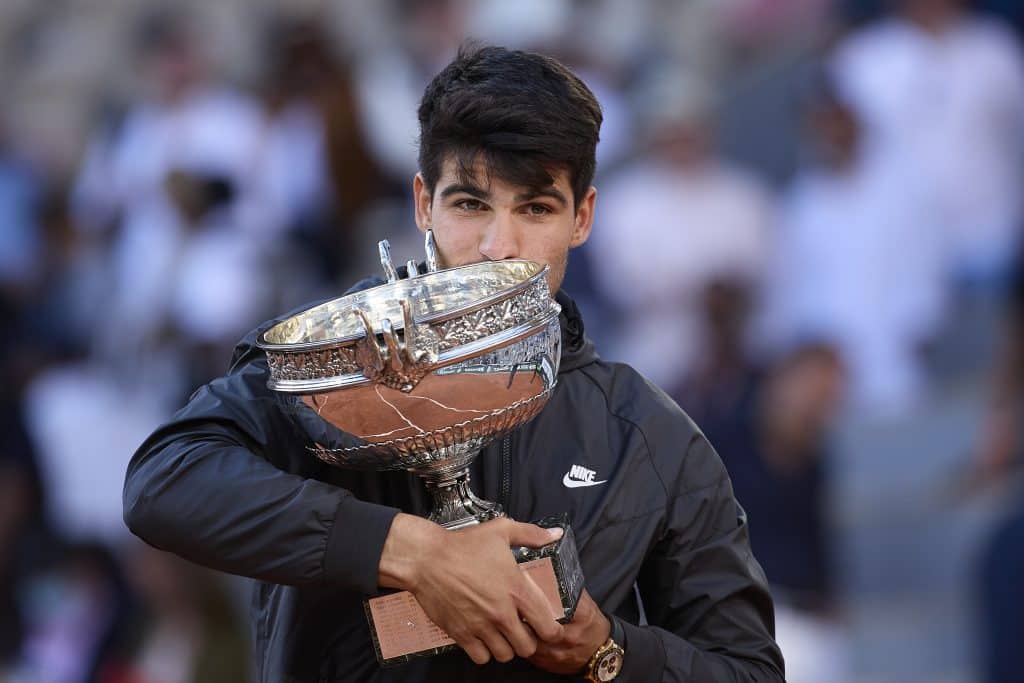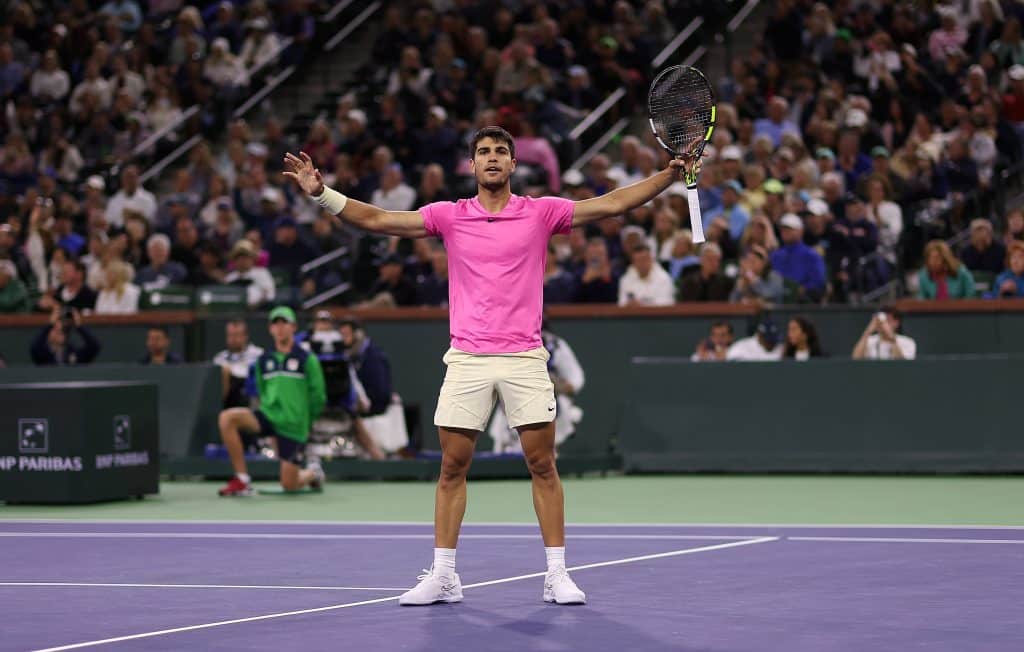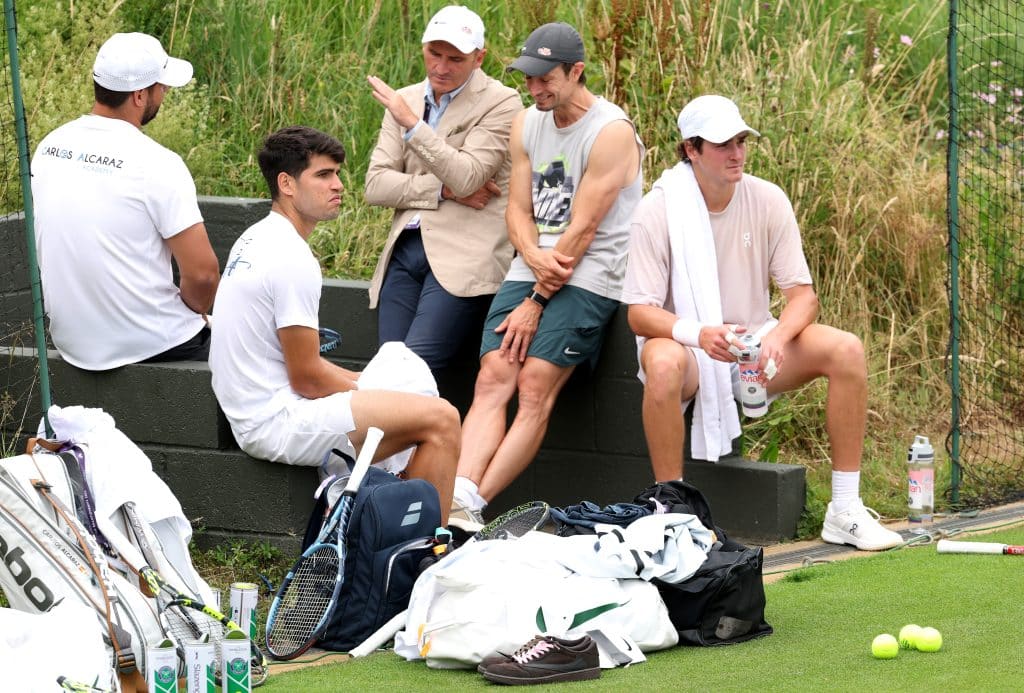US Open Preview: Will Alcaraz and Sinner continue the Grand Slam streak?

New York is loud again. The subway screeches under Ashe, the night sessions steal the back half of Europe’s evening, and the two best young players in men’s tennis walk in with the same expectation that greeted Federer in 2005 or Djokovic in 2015. For well over eighteen straight months the majors have belonged to Carlos Alcaraz and Jannik Sinner, passed back and forth like a baton in a two-man relay. The final act of 2025 asks a simple question. Is there room for anyone else?
The answers live in the numbers, in the way the ball jumps on the Laykold hard court, and in the paths both men have cut across this season. Alcaraz brings a Roland Garros title and a summer kick that ended with Cincinnati. Sinner arrives as world No. 1, defending champion in New York, and the new king of Wimbledon. The rest of the field? Talented, motivated, and scrambling to find a tactical wrinkle big enough to crack a rivalry that keeps shrinking the sport’s margin for error.
The stage in NYC is set. pic.twitter.com/R4WhRPWW5L
— US Open Tennis (@usopen) August 23, 2025
All you need to know about the US Open
Grand Slam streak
Since last September, Sinner lifted the 2024 US Open trophy, then defended Melbourne in January for his second Australian Open crown. On clay, Alcaraz survived the heavyweight fortnight and in the craziest game, maybe of all time, took Roland Garros.
On grass, Sinner reversed their Paris ending and beat Alcaraz in the Wimbledon final for his first title at SW19. All roads lead here. If either one leaves New York with the silver, it will be a clean sweep of the 2025 majors by the same two names. That is not myth making, that is the truth.
The numbers around the dominance matter. Sinner has played like a man sprinting through checkpoints. Alcaraz has racked up trophies at the Masters tier and sits on a pile of big-match wins that usually belong to older players. One of them will also leave America with the inside track to year-end No. 1. It is a performance race and a math problem at the same time.
A DREAM REALIZED! 🏆🇮🇹
— 365Scores (@365Scores) July 13, 2025
Jannik Sinner defeats Carlos Alcaraz in an EPIC Wimbledon final to claim his first-ever title pic.twitter.com/WzVIrIHLHl
Carlos Alcaraz, summer momentum and the New York blueprint
Alcaraz’s year has balanced menace with polish. He collected Monte Carlo, added Rome, then banked Roland Garros. On the North American swing he met Sinner again in the Cincinnati final, raced to a 5–0 lead and lifted the trophy when the Italian stopped early. Nobody hands you a Masters 1000, even when the last act is brief. The larger point is that Alcaraz has been stacking ‘big titles’ at a clip only Djokovic matched in his prime years. He has six titles in 2025, three of them Masters, one a major.
Hard courts in New York reward first-strike conviction and shape-shifting. Alcaraz has both. The serve has ticked up a notch in pace and disguise, the forehand can still unspool angles that yank a rally off its axis, and his short game plays beautifully at Ashe once the night air cools the ball. He is also a cleaner front runner now. Early in his career a quick break sometimes became a rollercoaster. This season it tends to become a closed door.
Tactically his best pattern here is the simple one. Work the backhand corner with height and spin, flip the ball line with the forehand once Sinner freezes a step, then crash the net to end it in two touches. That sequence matters against Sinner because extended neutral exchanges are the Italian’s life support. Alcaraz’s way out of the grind must be proactive, not reactive.

Jannik Sinner, the baseline metronome with grass on his CV
Sinner arrives as No. 1, as the Wimbledon winner, and as the defending US Open champion. His 2025 record coming in is elite. He retired in Cincinnati after five games, and he did it wearing a protective sleeve, which set off the usual alarms. He called it illness in the aftermath and pointed everything toward New York, despite dropping out the mixed doubles. The broader form line does not wobble because of a bad day in Ohio. On grass he handled Alcaraz with patience and first-ball accuracy. On hard courts he has built a serve that buys him attacking forehands in neutral, a big change from the teenager who lived on ball-striking alone.
There is also an intangible flickering around him now. The first Wimbledon changed his posture in tight sets. Tiebreaks used to feel like coin flips. At the French Open and Wimbledon finals he found short slices, delayed backhands and serve locations that blazer players unlock only after multiple major wins. Confidence is a cliché until a player’s choices get braver. Sinner’s have.

Seeds, paths and the math of No. 1
The tournament seeded Sinner first and Alcaraz second, which keeps them apart until the final. That matters. It extends the sense that both are playing a separate mini-tour against the field and then each other. The official permutations are simple enough. If Alcaraz goes deeper, he can swing the rankings back in his direction. If Sinner holds serve as champion or finalist while Alcaraz falls early, he strengthens his grip. Either way the race is close, and it is live through the second week.
The rest of the first eight seeds include Alexander Zverev, Taylor Fritz, Jack Draper, Ben Shelton, Novak Djokovic and Alex de Minaur. That is a spectrum of threats, styles and question marks. One of those names will have to flatten the favorite across best of five, then probably do it again. That sounds harsh because it is. The draw is a gauntlet only when your quarter coalesces. Otherwise it is two tough nights and a lot of maintenance.
New York’s surface and why it tilts the chessboard
The US Open uses Laykold, a quick acrylic that lives on the firm side of hard. It encourages an early strike and punishes indecision. The tournament has leaned into pace in recent years, and the ball often feels quicker under the lights. Combine that with August humidity and you get a surface that asks questions of footwork and balance. It also answers a debate about what travels. Serve plus one travels. Clean return patterns travel. Short backswing backhands travel. Both Alcaraz and Sinner tick those boxes.
There is also a scheduling quirk that influences the shortlist. Night sessions can slow the ball a touch and reward patience. Day heat asks for shorter points and better first serves. The player who adapts hour by hour tends to win New York. Alcaraz has always loved flipping styles inside a single match. Sinner is catching up fast.

The challengers and what they would need
Novak Djokovic. The sport’s greatest problem solver can still run a five-set chess match, and he has been choosy about his calendar to protect the big peaks. The question is physical. There have been gaps between appearances and hints that the grind of back-to-back best-of-five days is harder to schedule than it used to be. If he plays himself into rhythm by the second week he becomes the most dangerous floater alive. If not, he looks more beatable in three sets than he once did.

Ben Shelton. The Toronto title matters because it was built the right way. He beat top seeds, saved tough points with first serves, and held his nerve in breakers. The serve-forehand cannon plays in New York, especially against returners who stand deep. The risk for Shelton comes in long rallies and defensive transitions. The reward is a wave of free points that no one outside the top two can match. If the draw allows him to avoid elite counterpunchers until late, he becomes a semifinalist on merit.
Alexander Zverev. He has the height, serve and backhand to make the court feel narrower. On a fast hard court those tools matter. The issue has been closing against the very best in second weeks. If Zverev had Cincinnati volumes of confidence in his second serve, he would sit at the top of the chasing pack. He still does, but the gap is real.
Taylor Fritz. The home hope thrives in North American air. Fritz cannot outrun either of the top two in defense, so his path depends on landing a high first-serve percentage and leaning on backhand line changes to rush opponents. There are matchups that suit him. A quarterfinal with a seed below him would make sense of his year.
Jack Draper. The lefty has the shots and the mass to push anyone back. The concern is the summer arm problem that limited his prep and forced him off the match treadmill. When healthy, his serve and forehand can collapse space. When rusty, the forehand leaks early. A week of rhythm helps. A night session test against a top returner can hurt.
Medvedev, de Minaur, Rune, Rublev and the rest. The collection is deep, and in a single match any of them can chew up a favorite’s Plan A. The trick is building a full fortnight out of that. Against Sinner or Alcaraz you need a Plan B that scores under pressure. Too many contenders keep the rally alive instead of taking it away.
The pocket guide to week one
The US Open is now a 15-day show with the richest prize purse in the sport. The early days churn through two sessions, day and night, with the seeds looking to stay low-contact. For Alcaraz and Sinner the goal is simple. Keep sets tidy, find the timing window before the second week, and avoid the trap matches where a veteran drags you into extra movement. The court rewards courage in second balls and confidence at net. If either feels the ball from the start, they will settle into the kind of groove that takes them to Friday or Sunday without seeing a fifth set.

Top seed Jannik Sinner opens against Vit Kopriva with power hitter Alexei Popyrin lurking as a possible second round, while Carlos Alcaraz draws Reilly Opelka’s serve-first examination and Novak Djokovic begins against wildcard Learner Tien.
Elsewhere the first round throws up Holger Rune against Botic van de Zandschulp, Sebastian Korda against Cameron Norrie, and Alexander Bublik against 2014 champion Marin Cilic, plus Lorenzo Musetti’s blockbusting test against Giovanni Mpetshi Perricard.
The architecture beyond that is spicy without being chaotic. Alcaraz shares the bottom half with Djokovic, so a heavyweight semi is on the board, and his quarter could run through a gauntlet that includes Daniil Medvedev, Ben Shelton or Casper Ruud.
Sinner’s top half is cleaner on paper but seeded to funnel him toward Jack Draper in the last eight and then Alexander Zverev in the semis, a route that would ask him to handle pace, height and counterpunching before any title defence talk becomes real.
The men’s singles draw for the US Open is set! 🧐
— US Open Tennis (@usopen) August 21, 2025
Top half: pic.twitter.com/BgAkOqhTLC
Nicky’s Verdict
I say we get Sinner and Alcaraz again. In 2025, I see no alternative. I’d love to see Novak go the distance for a last hurrah but I just don’t see it happening.
The edge goes to Alcaraz if he manages service games with the same economy he found in Rome and Cincinnati, because that version of him buys freedom on return and lets him play the net like it is a luxury he can afford.
Either way, the Grand Slam streak is the headline. Twelve months of majors, one rivalry, one city left. New York has a way of making the answer loud.
By Nicky Helfgott / @NickyHelfgott1 on Twitter (X)
Follow all the latest tennis and US Open news here on 365Scores!



